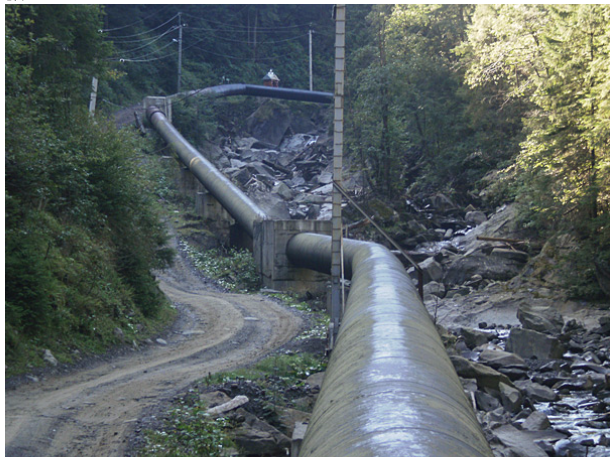
1.1 The damage to the environment during the construction and operation of hydroelectric power plants
1.2 Most rivers in Ukraine from the Soviet era are regulated and basically are a cascade of ponds. In recent years the construction of small hydropower plants on not regulated rivers has been intensified, primarily in the Carpathian region. Also, “UHE” begins the project of construction of 6 HPP on the Upper Dnister. The massive construction of hydropower plants leads to biodiversity loss, deteriorating water quality, destruction of natural landscapes, etc.
1.3 The reasons for the mass construction of small hydro power plants in recent years are:
• Legally set «green tariff» which encourages investors to build hydropower plants. The presence of the green tariff makes hydropower facilities super-profitable for investors, income is guaranteed from the state budget and is independent of market factors. More about the tariff you can read here http://www.nerc.gov.ua/index.php?id=23115
• The criminal inactivity of local and central government, who actually do not care for the interests of the community and do not control construction of small hydropower plants and their activities.
• Absence of environmentally directed clear and comprehensive legal rules for governing the construction of small hydropower plants.
• Low environmental awareness of business
• Low living standard in remote mountainous areas where usually the construction of small hydropower plants is planned.
Small hydropower plants are super-profitable for the investor, but they cause significant violation of environmental rights and reduction of standard of living of the local people. Thus the actions of state bodies involved in matters of coordination of small hydro plants directed only to support investors. As a result, small hydropower plants cause considerable social tension and cause active population speeches in defense of their rights.
The main adverse effects of disorder in the area of hydropower are:
• Loss of biodiversity (failure to comply with international conventions and agreements).
•Overspending of the state budget to compensate the owners of hydroelectric power plants through the mechanism of the “green tariff” (In 2014 small hydroelectric plants provided 0.15% of the total energy produced, but gained only 0.49% of the total amount paid by GP “Energorinok” to the companies http: // www .er.gov.ua / doc.php? f = 3066)
• Growing social tension in the places of HPP construction
• Loss of a tourist attraction and as a consequence – reducing the number of tourists, which is the source of income of the population and fill the budget subsidized regions.
• Loss of investment attractiveness of places where HPP was built.
• Increase of the ecologically unfavorable processes: floods, landslides, erosions, lack of drinking water, health deterioration, the elimination of which requires significant funds that are missing from local budgets.
At the moment the most “hot spots” where the HPP construction is planned are rivers:
Cheremosh tributaries http://www.epl.org.ua/ecology/mali-hes/doslidzhennia-epl/2875-kolyshnii-dyrektor-natsionalnoho-parku-hutsulshchyna-vasyl-prorochuk-breshe-z-metoiu-pobuduvaty-hes -v-seli-zelene-verkhovynskoho-raionu http://pryroda.in.ua/miniges/chy-buty-richtsi-cheremosh/
Dnister http://www.epravda.com.ua/publications/2016/12/29/616323/
Tisza and its tributaries http://www.epl.org.ua/ecology/mali-hes/doslidzhennia-epl/1708-znyshchena-richka-shypit-vzamin-na-90-shchomisiachnykh-hryven-dlia-kozhnoi-rodyny-sela -tur-ia-poliana
Sluch tributaries https://www.facebook.com/savesluch/
EPL provides advice and assistance to the local residents which are at risk of the construction of hydropower plants, highlights the problems in the media, preparing proposals for regulatory acts and uses legal mechanisms to protect rivers.

